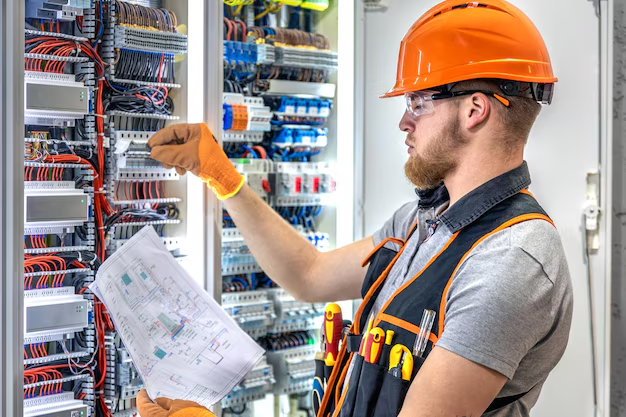Thinking of Becoming an Electrician? Here’s Your Pathway
In today’s fast-paced, tech-driven world, skilled trades like electricians are more vital than ever. If you’re considering a future that offers job security, competitive salaries, and the opportunity to work with cutting-edge technology, becoming an electrician could be your ideal path. But how does one embark on this journey to become an electrician? Let’s break it down into clear, practical steps.
Understand the Role of an Electrician
Before diving in, it’s essential to understand the multifaceted role of an electrician. Electricians install, maintain, and repair electrical systems—everything from home wiring to complex industrial networks. This career requires not only technical expertise but also problem-solving skills and a commitment to safety.
Educational & Training Requirements
High School Diploma or GED: The first step in becoming an electrician is obtaining a high school diploma or equivalent. Courses in math, physics, and shop can provide a solid foundation.
Enroll in a Trade School or Community College: While not always mandatory, completing a certificate program or earning an associate degree in electrical technology is highly beneficial. Such programs provide comprehensive knowledge in essential areas like electrical theory, blueprint reading, and safety practices.
Complete an Apprenticeship: Hands-on experience is crucial. Most aspiring electricians enter an apprenticeship program, which typically lasts four to five years. During this time, apprentices work under the mentorship of licensed electricians, gaining invaluable experience while earning a salary. To find apprenticeships, consider reaching out to trade unions like the International Brotherhood of Electrical Workers (IBEW) or commercial contractor associations.
Get Licensed: After completing training, you’ll need to pass a licensing exam. Licensing requirements vary by state but generally include knowledge of the National Electrical Code and local building codes.
Consider Specialization: As your career progresses, you might choose to specialize in areas such as solar power installation, industrial systems, or emergency repair services to enhance your employability and income potential.
Financial Support and Educational Aid
Embarking on a career as an electrician requires an upfront investment in education and training, but financial assistance options are plentiful.
Government and Institutional Aid
Federal Student Aid Programs: Look into grants and loans available through FAFSA to help cover the costs of trade schools or community college programs.
State-Specific Grants: Many states offer scholarships and grants specifically for tradespeople in training. Check with your state’s department of labor or local colleges.
Apprenticeship Sponsorship
Many apprenticeship programs are sponsored by unions or contractors, meaning you can earn a salary while you learn without incurring student debt. This pathway blends practical learning with financial independence.
Scholarships for Trade Schools
Scholarships aren’t just for academic degrees. Search for scholarships geared towards trade and technical education. Numerous organizations and foundations support aspiring tradespeople, recognizing their crucial role in the economy.
Credit and Loan Solutions
Student-Friendly Credit Cards: Consider credit cards designed for students or those in apprenticeships with low interest rates and benefits like cash back on purchases related to education and training tools.
Educational Loans with Favorable Terms: Investigate educational loans that offer flexible repayment schedules or deferment options until after apprenticeship completion.
Key Takeaways: Financial and Educational Resources ⚡️
- 📘 FAFSA Grants and Loans: Essential for covering tuition costs.
- 🛠 Union-Sponsored Apprenticeships: Earn while you learn, reducing financial pressure.
- 🏆 Trade School Scholarships: Specific scholarships for aspiring electricians.
- 💰 State Grants for Trade Training: Look locally to maximize aid opportunities.
- 💳 Student-Friendly Credit Cards: Manage expenses with beneficial credit card terms.
- 🔄 Flexible Educational Loans: Consider options with deferred repayment plans.
Becoming an electrician is a step into a world of endless possibilities. With the right mix of educational preparation, practical experience, and financial assistance, you can secure your future in this dynamic and in-demand field. Embrace the journey; your next step is electrifying!
